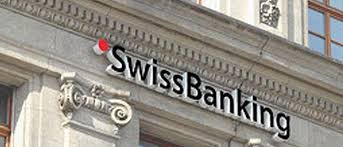Internal control is the system, policy, and process put in place by a corporation to assure the accuracy of financial and accounting data, encourage accountability, and avoid fraud. This article brings to you what internal control is, the accounting, examples, and the COSO Framework.
Internal Control: An Overview
Since the early 2000s accounting scandals, internal control has become a critical business function for every corporation in the United States. Following their implementation, the Sarbanes-Oxley Act of 2002 was put into place to protect investors. Particularly from accounting fraud and to improve the accuracy and trustworthiness of business disclosures. Hence, making management liable for financial reporting and generating an audit trail. This has had a significant impact on corporate governance. Moreover, managers who are determined to have failed to appropriately establish and manage internal control face substantial criminal consequences.
The auditor’s view that comes with an income statement is dependent on an audit of the processes and records that were utilized to create them. Meanwhile, external auditors will examine a company’s accounting systems. And internal control as part of an audit and offer a view of their effectiveness.
What’s More?
Internal audits assess a company’s internal controls, which include its corporate governance and accounting systems. In addition, they guarantee that rules and regulations are followed. That financial reporting and data are accurate and timely. And that operational efficiency is maintained by discovering problems and fixing gaps before they detect in an external audit. Internal audits are increasingly important in a company’s operations and corporate governance.
Although no two internal control systems are the same, many key ideas concerning financial honesty and accounting standards have established standard management methods. Although internal control might be costly, effective implementation of internal control can help to streamline operations, boost operational efficiency, and prevent fraud.
Irrespective of an organization’s policies and procedures, only considerable assurance can be supplied that internal control is functioning and financial information is accurate. Moreover, human judgment limits the efficiency of internal control. For operational efficiency reasons, a company may frequently grant high-level workers the authority to overrule internal controls, and internal controls can be evaded through collusion.
Types of Internal Control
Below are types of Internal control and their explanation.
Controls can be First, preventative, deterring fraud and mistakes, or Second, detective, identifying problems after they occur. Working together, they can boost ongoing business activities by resolving existing issues and preventing future ones.
Preventive Internal Control
Preventive internal control operations, which include detailed documentation and authorization standards. So as to try to prevent mistakes or fraud from occurring in the first place. A fundamental component of this process is the separation of tasks. Which guarantees that no single person is in a place to authorize, or record. Or be in control of a financial transaction and the associated asset. Internal control includes invoice authorization and expense verification. Furthermore, preventative internal controls also involves restricting physical access to equipment, inventories, currency, and other assets.
Detective Internal Control
Detective control is an alternative process to catch objects. Or events that you miss the first line of defense. However, the most significant activity here is reconciliation. Which is use to analyze data sets and take appropriate action when there are material disparities. Finally, external audits from accounting companies and internal audits of assets such as inventory are examples of detective controls.
Internal Control Accounting Examples
The following are the accounting internal control examples.
#1. Duties Separation: Internal Control Examples
This is when there is a segregation of work responsibilities among different employees in order to limit the danger of error or inappropriate behavior.
#2. Physical Restrictions: Internal Control Examples
When infrastructure, inventory, securities, cash, as well as other valuables are physically protect. However, this can be accomplish by employing locks, safes, or other environmental restrictions. Moreover, access has limit to those with the necessary authority.
#3. Reconciliations
To ensure that transaction information is correct and all transactions are properly in document. Comparisons are done between similar records maintained by various personnel. Moreover, Conducting a reconciliation from bank statements to verify register/records is one example. register
#4. Policies and Processes
Policies, processes, and documentation that give guidance and education to ensure consistent performance at a necessary level of quality are in place. Hence, these should be provided at all organizational levels. Departmental as well as University/Organizational.
#5. Review of Transactions and Activities
Manager reviews of a transaction, operation, and summary reports aid in tracking effectiveness against goals and objectives. Also identifying problems, identifying trends, and so on. Particular instances include: comparing budget statements to actual costs on a monthly basis. Examine telephone call activity data for personal or non-business-related phone calls. Employees review their time cards and overtime hours.
#6. Control for Information Processing
Basically, when information is processed, a number of internal control is carried out to ensure the correct, completeness, and authorization of transactions. Moreover, modifying checks or comparing to approved control files or totals are performed on data entered. In addition, transactions are accounted for numerically, and file totals are managed. And also reconciled with past balances and control accounts. Access to data, files, and programs is restricted, as is the development of new systems and changes to existing ones.
#7. Templates
Formalizing financial paperwork fosters consistency, which makes the auditing process easier. Although some reports, such as a balance sheet or profit and loss statement, have a common style. Other papers might vary greatly amongst business teams. Moreover, developing and using the same templates for estimations, invoices, purchase orders, funding requests, receipts, and expenditure reports ensures that similar items can be compared during an audit. Streamlining these items is a key internal accounting control that companies often ignore in their drive to adopt more visible control systems.
#8. Trial Balances
Accounting using double-entry guarantees that the books are constantly balance. Nevertheless, mistakes and fraud can still occur in a double-entry accounting system, hence why trial balances should be utilized with this method. Trial balances are a type of accounting control that adds stability to the system. By maintaining an internal record of credits and debits allows organizations to discover problems early on.
#9. Backup data
The most overlooked internal accounting control system is data backups. Since accurate financial data necessitates technological connection between platforms, financial input loss can skew reports and muddle audits. Moreover, when technology fails, previous reports and crucial data can be lost, causing reporting delays and affecting essential accounting tasks.
When computer servers fail, backing up digital files to the cloud protects data from loss.
Notable Information
Implementing effective accounting controls is pointless unless workers are trained to act when they spot a problem or suspect conduct. Formal procedures must be developed to educate personnel on how to handle problems when they emerge. Moreover, when there is a suspicion of mistake or malicious intent, all workers should know who they can tell and what kind of response to expect. Furthermore, their identities must be secured as a result of this.
Full Meaning Of COSO
The Treadway Commission’s Committee of Sponsoring Organizations (COSO) created a COSO Framework for evaluating internal control in 1992. Hence, this model has been extensive as the generally acknowledged framework for internal control. And is commonly regard as the gold standard against which firms judge the efficacy of their internal control systems.
COSO Internal Control Framework
Internal control defines the COSO Framework model as “a process carried out by an entity’s board of directors, management, and other people to offer reasonable certainty of the attainment of objectives in the following. Efficacy and effectiveness in operations, Reliability of Financial Reporting, and Finally, compliance with applicable laws and regulations.
The underlying five components of an effective internal control system work together to support an entity’s mission, strategies, and related business objectives:
#1. Environment Control
- Maintain your integrity and ethical ideals.
- Ensure to make a commitment to mastery.
- Make use of the board of directors and the audit committee.
- Facilitate the ideology and working style of management.
- Establish an organizational structure.
- Determine the delegation of authority and duty.
- Make use of human resource policies and procedures.
#2. Risk Evaluation
- Firstly, Create company-wide goals.
- Secondly, Incorporate process-level goals.
- Thirdly, Conduct a risk identification and analysis.
- Finally, Change must be managed.
#3. Activities Under Control
First of all, adhere to policies and procedures, Then, boost security (application and network), Manage the application change process, Prepare for business continuity/backups, Outsourcing should be done.
#4. Communication and Information
Assess the information’s quality, Evaluate the efficacy of communication.
#5. Monitoring
Continuously watch the situation, Carry out separate evaluations, and Declare any flaws.
Through directed leadership, common values, and a culture that emphasizes responsibility for control. Moreover, these components work together to lay the groundwork for strong internal control within the organization. Furthermore, the numerous risks that the company faces are identified and reviewed on a regular basis at all levels and across all functions. Furthermore, control efforts and other procedures are planned ahead of time to handle and minimize major hazards. Information is crucial to recognizing risks and fulfilling business objectives which are distributed across the enterprise via established channels. Finally, the whole system is regularly monitored, and faults are treated in a timely manner.
Which Five Internal Controls Are There?
An internal control framework is made up of five connected elements: the control environment, risk assessment, control actions, information and communication, and monitoring.
What Serves as Internal Control’s Objective?
Internal controls are meant to stop mistakes and anomalies, spot issues, and guarantee that the right steps are done to fix them.
What Internal Control Is the Most Crucial?
Segregation of roles, proper transaction and activity permission, adequate documentation and recordkeeping, physical control over assets and data, and independent performance checks are among the most crucial control procedures.
What Are the Benefits of Internal Control?
Internal controls reduce the risk of over-dependence on a few key personnel by making the company process-driven rather than people-driven. Internal controls can help you find overlaps in your operational and compliance procedures, providing you the chance to streamline your business.
Who Is Responsible for Internal Control?
Internal controls must be established by management. Management must maintain sufficient rules and procedures in order to sustain efficient internal controls. Share these guidelines and policies.
What Is Internal Control Checklist?
The Internal Control Checklist is a tool that may be used by the campus community to assess and improve internal controls, encourage effective and efficient business practices, and boost compliance in a department or functional unit.
Conclusion
Internal control is the system, policy, and process put in place by a corporation to assure the accuracy of financial and accounting data, encourage accountability, and avoid fraud.






